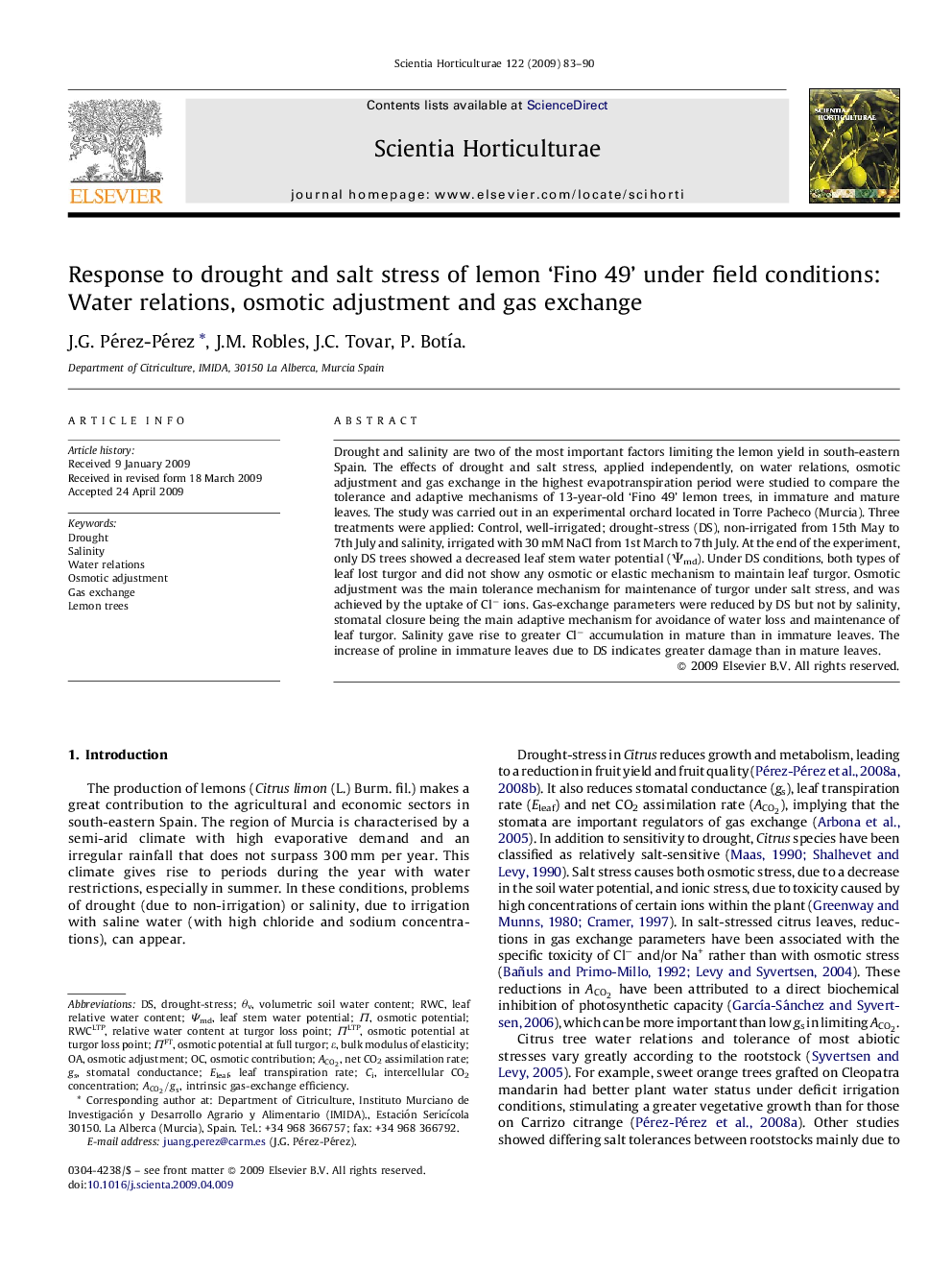| Article ID | Journal | Published Year | Pages | File Type |
|---|---|---|---|---|
| 4569057 | Scientia Horticulturae | 2009 | 8 Pages |
Abstract
Drought and salinity are two of the most important factors limiting the lemon yield in south-eastern Spain. The effects of drought and salt stress, applied independently, on water relations, osmotic adjustment and gas exchange in the highest evapotranspiration period were studied to compare the tolerance and adaptive mechanisms of 13-year-old 'Fino 49' lemon trees, in immature and mature leaves. The study was carried out in an experimental orchard located in Torre Pacheco (Murcia). Three treatments were applied: Control, well-irrigated; drought-stress (DS), non-irrigated from 15th May to 7th July and salinity, irrigated with 30 mM NaCl from 1st March to 7th July. At the end of the experiment, only DS trees showed a decreased leaf stem water potential (Ψmd). Under DS conditions, both types of leaf lost turgor and did not show any osmotic or elastic mechanism to maintain leaf turgor. Osmotic adjustment was the main tolerance mechanism for maintenance of turgor under salt stress, and was achieved by the uptake of Clâ ions. Gas-exchange parameters were reduced by DS but not by salinity, stomatal closure being the main adaptive mechanism for avoidance of water loss and maintenance of leaf turgor. Salinity gave rise to greater Clâ accumulation in mature than in immature leaves. The increase of proline in immature leaves due to DS indicates greater damage than in mature leaves.
Keywords
osmotic potential at full turgorACO2RWCθvGas exchangeDrought-stressOsmotic adjustmentDroughtWater relationsSalinityintercellular CO2 concentrationVolumetric soil water contentLeaf relative water contentBulk modulus of elasticitynet CO2 assimilation rateLeaf transpiration rateStomatal conductanceOsmotic potential
Related Topics
Life Sciences
Agricultural and Biological Sciences
Horticulture
Authors
J.G. Pérez-Pérez, J.M. Robles, J.C. Tovar, P. BotÃa.,
